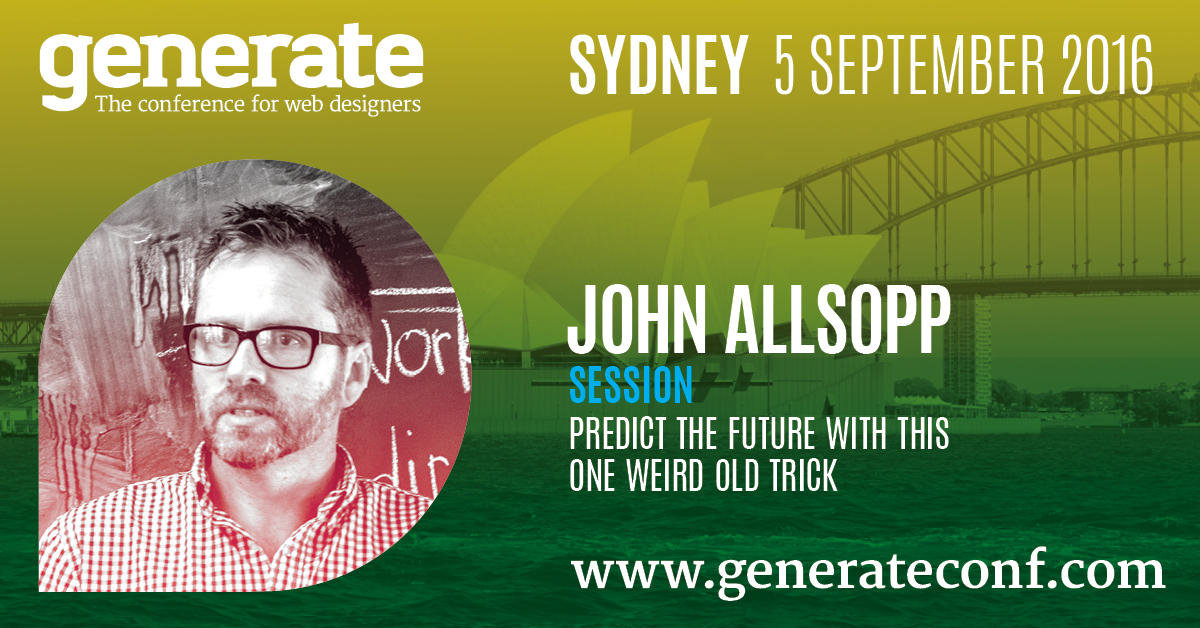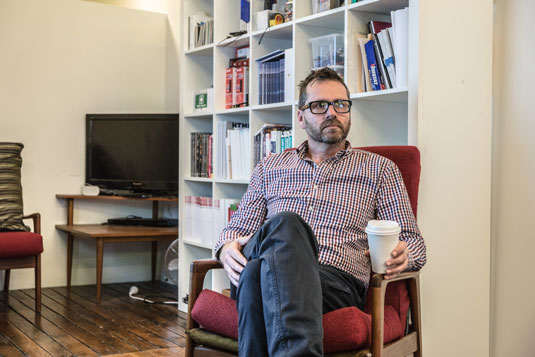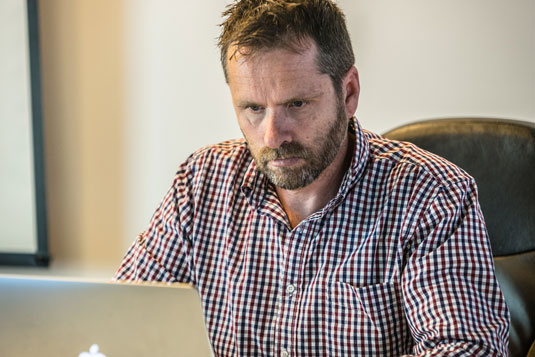4 ways the web will change in the future
Ahead of his talk at Generate Sydney, the man behind 'A Dao of Web Design' offers a glimpse into the internet's future.

Don't miss John Allsopp's opening session - Predict the future with this one weird old trick - at Generate Sydney on 5 September. Can't get there? There are Generate conferences coming up in San Francisco and London too!
If anybody should be able to predict the future, John Allsopp is more qualified than most. He is, after all, the man who just might have coined the inglorious term ‘Web 2.0' (he can document his usage of it before Tim O'Reilly popularised the phrase).
Allsopp is also feted as one of responsive design's founding fathers. His essay, ‘A Dao of Web Design' was published in 2000. In it he encourages designers to let go of print's rigidity and embrace the web's fluidity. Ethan Marcotte cites Allsopp's essay as one of his key inspirations.
So what does Allsopp – who's speaking at our Generate Sydney event in September – predict for the next century? You may be somewhat surprised by what he has to say...
The medical web
"People think the future is about jetpacks," Allsopp asserts, waving his hands. "You know, sometimes we believe the future has to be awesome, and if it's not we're disappointed."
The future, according to Allsopp, is likely to be rather more Last Of The Summer Wine than Minority Report.
Think about it, he challenges: "The fact is, if you can keep a significant percentage of old people in their home for another year, the savings will be huge."
Daily design news, reviews, how-tos and more, as picked by the editors.

To achieve this doesn't require complex, impressive systems – all we need are basic, web-enabled monitors that record and broadcast heart rates and the like.
"It's not just about saving money. They'll have dignity, they'll have control. And that could be done using a humble mobile phone. What greater opportunity? What greater challenge?" That, to Allsopp, is a future worth pursuing, and there's not a jetpack, exoskeleton or internet-enabled fridge in sight.
A new maturity
Of course, to predict the future, you first have to understand the past. So I asked Allsopp how far have we as a community come from the days when A Dao of Web Design shook the web?
"You know, I think we have a good understanding of the challenges – from a visual design perspective – of designing for a screen," he replies.
"There's a degree of maturity and we're increasingly getting the solutions right. I think the work on the picture element by the Responsive Images Community Group was fantastic.

"For the first time, the people who used the technology – people who work at the coal-face, making things, web designers and web developers – they got up and they shaped what a technology should actually look like, and how it should work. And it was done in the face of objection."
Added complexity
One of the challenges preprocessors bring to the table, he says, is added complexity. "You've added complexity to the syntax and [the developer] also needs to know both CSS and Sass...
"Then, you need build tools to process your Sass into CSS, and then you put it into your browser and you want to debug it. Now you need source maps … We're creating an awful lot of complexity for the ease of the developer."
And why is that a problem? "It's a problem because the more complex a product is, the more costly it is to maintain. The thing they learned in software engineering a long time ago is that 80 per cent of the cost of a system is maintaining it. If you build a complex system, you're adding to the cost."

Along with adding cost, complexity also brings other problems to the table – not least concerns about the availability and longevity of the other systems your product relies on.
"If your system is going to last any non-trivial length of time and you've got dependencies on version ‘x' of Sass and version ‘y' of Ruby on Rails, you wind up with a whole lot of technical depth that you've got to pay down at some point. You also need people who know all of the technologies."
He concludes with a warning against always grasping for the latest and most exciting tool. "I guess that's a way of saying we rush too quickly to new shiny things, rather than looking at the core, simple things like HTML, CSS and JavaScript. We're making things too complex and I think we should be careful."
Unconscious interactions
For the users of course, complexity is the last thing they want. "Today, almost all interactions are conscious," says Allsopp. "Whether its touch, or mouse or voice, it's still conscious.
"We're building systems that are dumb and passive. They're sitting there in a loop. That's how GUI programming works. There's an event loop and it waits until it gets an event and it responds. So, when we think about interaction, we think about a computer sitting there, waiting for us to touch it."
The thing is, we humans can't deal with too many thoughts at once. So if we want a computer to do something, we have to stop what we're doing and thinking about. For the most part, Allsopp argues, interaction is a block.

What interests him most is the idea of unconscious interaction. People are walking around with a phone in their pocket, and all the time they're creating a trail of data, he explains.
For example, the pattern of walking could suggest, when analysed, that the person has the flu. "What interests me is taking what people are doing naturally and unconsciously and turning those things into interactions, " he finishes.
The future, though, never looks quite like the future. "When we think about the future we have these huge Minority Report fantasies. It's much more incremental. I think we get overly ambitious, we take today and put jetpacks on it."
A JavaScript-powered future
And what's going to power this future? Allsopp's prediction is, once more, not quite the stuff of movies. "JavaScript. Learn JavaScript. I see a huge demand for it, it's going to be the lingua franca. People criticise it for all its problems and limitations.
"It's a common language that we're seeing everywhere, even in hardware now. You script Mac OS with JavaScript now. And, you know, lots of web designers have picked up some HTML and CSS along the way, and then just stop at JavaScript.
"People think: ‘Programming? How can that be interesting? It's scary. It's hard.' Don't think like that. It's logic and humans are logical. Our brains are hard-wired to do ‘if' , then ‘else' stuff. It's not much more complicated than that."
Looking back to the past
It's hard to believe 15 years have passed since Allsopp published the Dao of Web Design. And, if there's one thing that sums up the last 15 years, and will hopefully set us up for the next 15, it's this observation from Allsopp.
"It's the ‘World Wide Web'. It's got that ‘World Wide' bit in its name, and that's important. It underlines the web's values, which are: openness, interoperability and access."
For Allsopp, working on the web is like forming a pact. "The web has been very good to us – it's given us a good life, it's given us interesting problems to solve, it's given us a great community of people to work with, right around the world …
"We're immensely privileged. The very least we can do to pay the web back is to understand its values and to honour them."
John Allsop will be predicting the future at Generate Sydney on 5 September. Peter Smart will be looking at the future of the web and how to prepare for it now at Generate San Francisco; here he describes how touch is going to revolutionise design.
